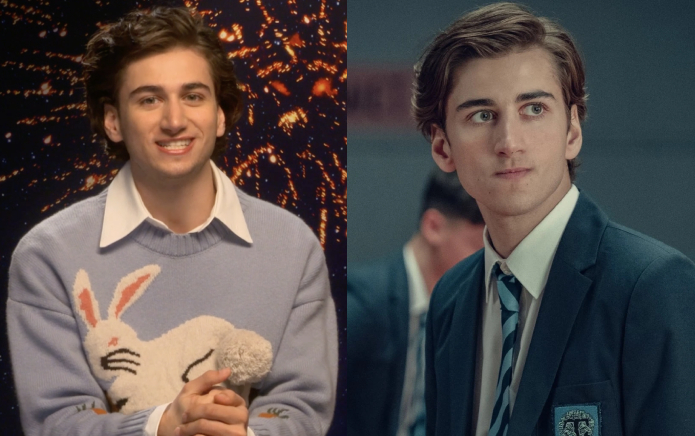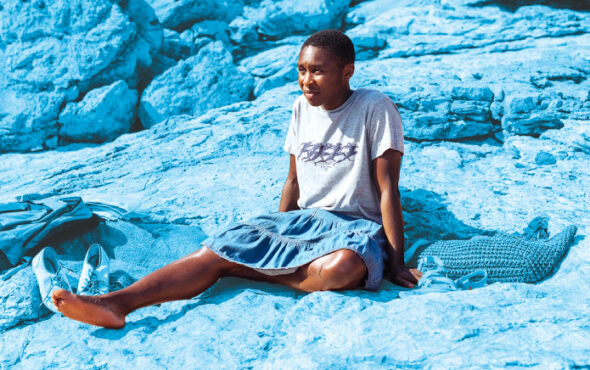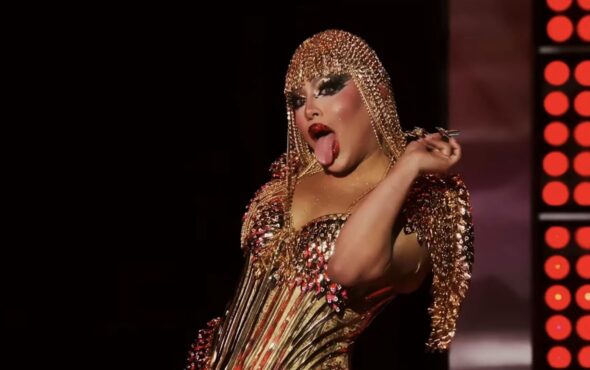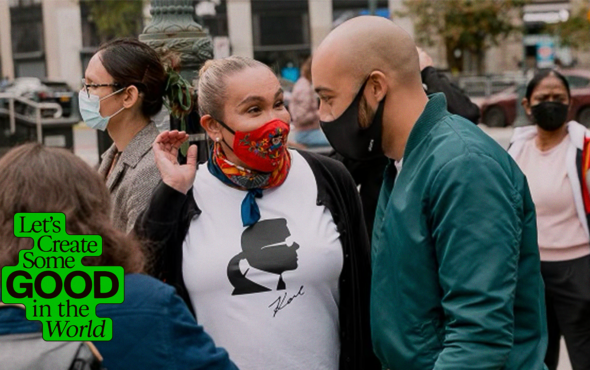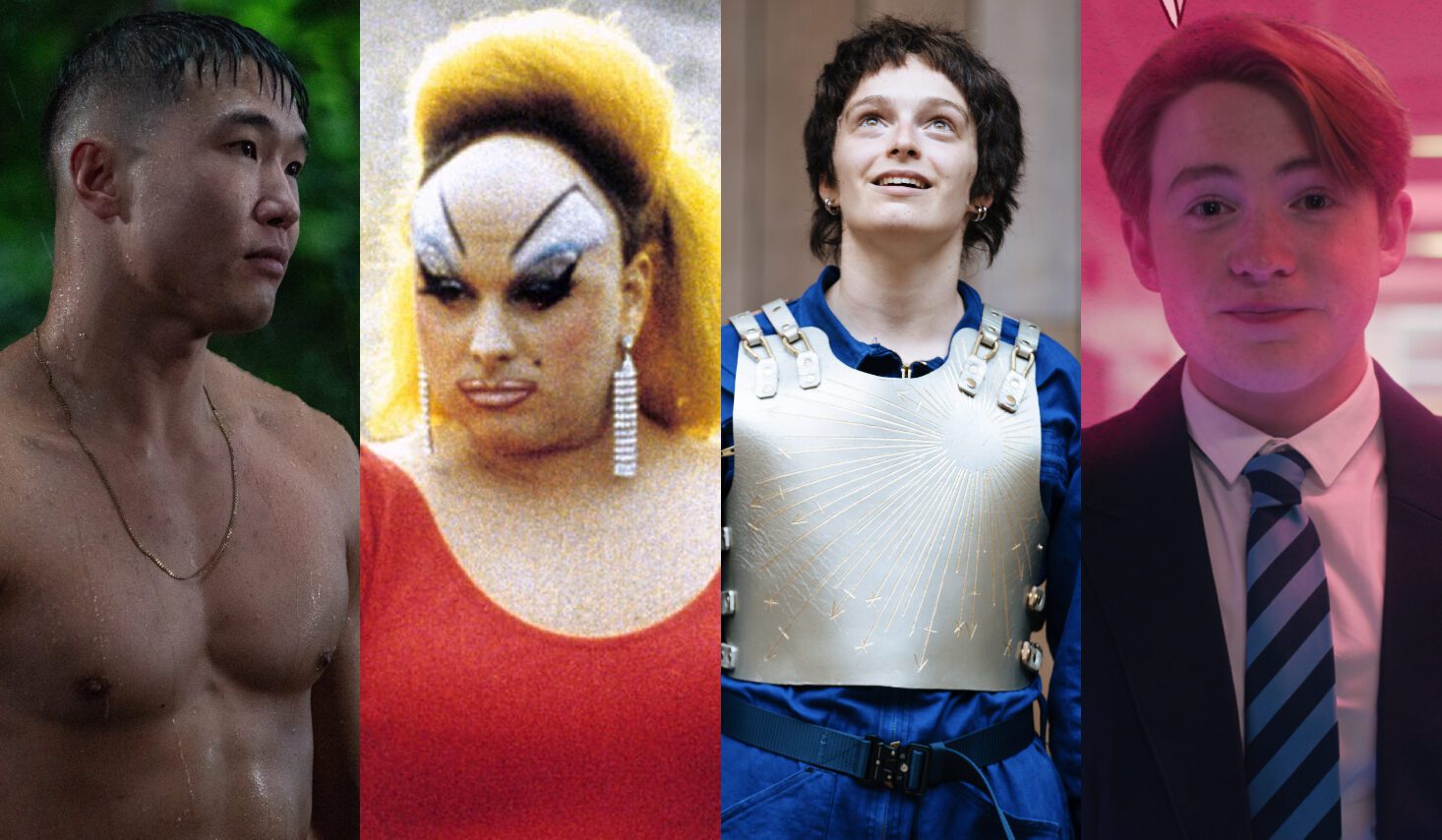
Storytelling is an artform, a practice that takes precision, skill and empathy. The subject takes the viewer through a narrative that feels completely true, even if every part of that tale is false. From dance to music, acting to art, storytelling is a masterful way to showcase personal strife as well as communities who don’t always find themselves centre stage.
Queerness and storytelling have a long and enmeshed history. From the use of queer-coded dialect such as Polari in the 20th century to the emergence of drag in gay bars in the 1950s, queer people have been telling stories for longer than we may think. Often hidden and heavily scrutinised, the art of storytelling for LGBTQ+ people was routinely met with hatred and disgust.
In 1972, John Waters released Pink Flamingos starring Divine, a heavily stylised, rampant ball of explosive energy. A character full of queerness and venom. Amongst queer audiences, she was an icon, however, with the straight masses… not so much. The film’s violence and ‘perversion’ shocked audiences, with queer characters being labelled as ‘perverse’ and ‘ungodly’ throughout the rest of the decade, all the way up to the present day. In 2023, representation and queer storytelling has evolved in ways that our queer elders could never have imagined. We are living in the times of queer Oscar winners, trans people selling out arena tours and bisexual and pansexual artists having their music heard across the world. A future that is bright and expansive.
Young stories have taken hold – with Alice Oseman’s Heartstopper painting last year with a colour of queer optimism and hope, as the younger generation’s core values of acceptance and tolerance were so beautifully visualised in its first series on Netflix. Seeing dialogue around bisexuality, transness and queer love explored in such a soft and real way touched millions around the world. Acting as a compassionate ‘if only’ for so many who struggled at school under Section 28, as well as acting as a mirror for others who are experiencing their first queer crushes in teenagehood right now, it harmlessly and passionately told the story of young people finding out what love might look like for them.
Despite shows like Osman’s global hit, Netflix’s Swedish teen drama Young Royals and the somewhat spicier Élite peppering our streaming services with LGBTQ+ stories, trouble still brews amongst certain audiences. With TV, film and theatre being amongst the richest landscapes for LGBTQ+ representation, the historical baggage of the past is not too far around the corner – peering into the stories of the present and tarnishing them with queerphobia and bigotry. Florida’s ‘Don’t Say Gay Bill’ and misguided fear around Drag Queen Storytime harks back to the same chilling commentary those who disliked queer cinema in the 70s spat out. Fearing ‘perverse’ depictions of ‘overly sexualised’ people damaging or influencing their children stands in stark contrast to the freeing depictions of queerness young LGBTQ+ are actually benefiting from. This noise in the background only acts as a siren call for why these shows are so important for young people today.
It wasn’t all just for those pesky Gen Z’ers though. Shows like Channel 4’s Big Boys and Prime Video’s A League Of Their Own gripped audiences young and old across the world. Jack Rooke’s auto-biographical tale of going to university in the 2010’s introduced audiences to an expert combination of humour and heart as Big Boys climaxed in Rooke coming out at the end of the series. Danny, played by Jonathan Pointing, starred as Jack’s ‘Straight Best Friend’, adding a new layer of connection to the story. Showing audiences how topics such as grief and mental health aren’t just experiences that happen to straight people.
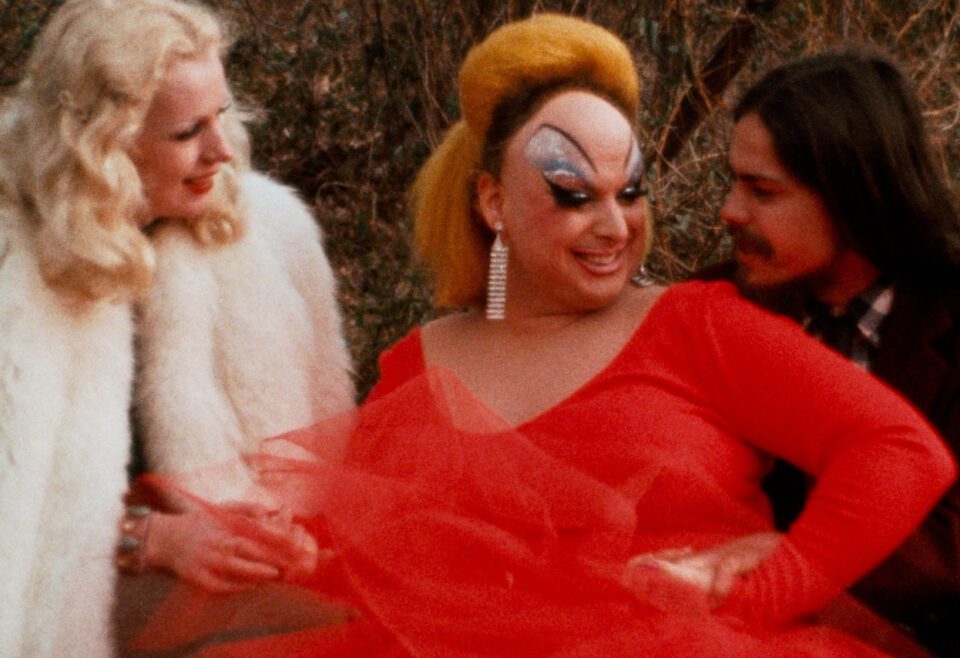
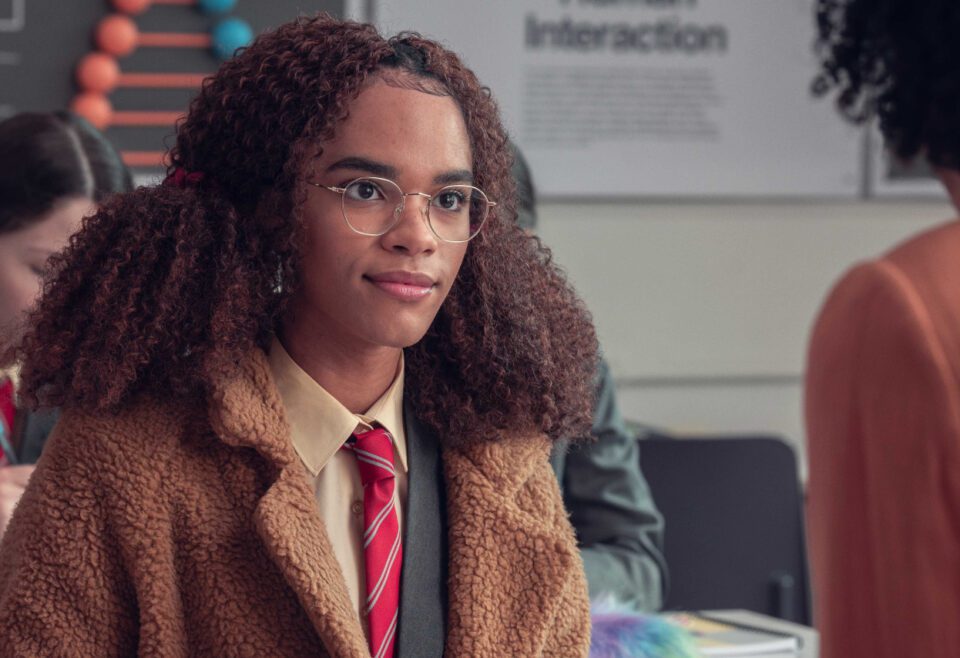
Theatre tends to take a stronger bite when it comes to really pushing the parameters of queer storytelling. Through casting choices or set design, or re-tellings of supposedly ‘non-queer’ stories, the stage continues to provoke audiences. The 2022 casting of actor Isobel Thom as Joan of Arc in Shakespeare’s Globe’s production of I, JOAN saw Joan’s story told as a non-binary person, causing outrage to those who wouldn’t know good storytelling if it hit them in the face with a wand, but more importantly showcasing how queer stories can be told in the most unexpected of realms. It reverberated the message loud and clear that historic tales and old classics don’t have to continually be told in flat and static ways, more importantly highlighting that queer performers are not just limited to performing roles that discuss their own personal trauma or journey in a way that can render them trapped.
Despite this, LGBTQ+ stories are often best told when the storyteller shapes their own narrative – allowing them to share some of their most personal moments in a way they may have never dreamed possible. Take Rob Madge’s one person show My Son’s A Queer (But What Can You Do?). After a sell out run at the Edinburgh Fringe, Madge and producer extraordinaire Paul Taylor-Mills (Heathers the Musical, But I’m A Cheerleader: The Musical) re-opened the show at the Garrick Theatre on London’s West End. An instant sell-out, the show takes you through Madge’s youth in which they put on performances in their living room for their family. The result – a reimagining of what it would’ve looked like if they were to perform their ‘at-home-Disney-Parade’ now.
Not only does the show explore what it means to be encouraged to be yourself as a young person, but hits the much broader note of what it means to have love and support from those around you when the world didn’t always see you as the star that you are. As the show gears up to return to the West End at The Ambassadors Theatre, it’s a delight to be able to know that young queer storytellers who see this show will hold it as a core memory of the moment they knew that the stage was in fact, for them.
Although the stage has earned itself a pat-on-the-back for its ability to tell stories in multi-faceted ways, it doesn’t always get it perfect. When COCK premiered at The Ambassadors Theatre, it was the casting people were talking about. Starring Jonathan Bailey and Taron Egerton (briefly until he contracted COVID-19 and then was replaced with Joel Harper-Jackson) was a … well bit of a cock-tease of a show. Two stars of Hollywood, both stunning in their own right, starring in a queer love story definitely drew in the masses to their sold out run. The story, however, centred around Jonathan Bailey’s character John, a gay man who begins to question his sexuality when he falls in love with a woman, W, played by Jade Anouka.
Alongside stylised sets and even more stylised sex scenes, the sell out show gained mixed reviews. Our resident theatre expert Chris Selman detailed that “something just doesn’t seem to sit quite right” with the show’s depiction of labels. Whether it be the high profile casting or the somewhat tempting title, the show itself seemed to feel ‘click-baity’ for many queer audience members who felt that many were just attending to see two of Hollywood’s most attractive suitors get it on. Whatever your view of the show, it definitely was one that got everybody talking.
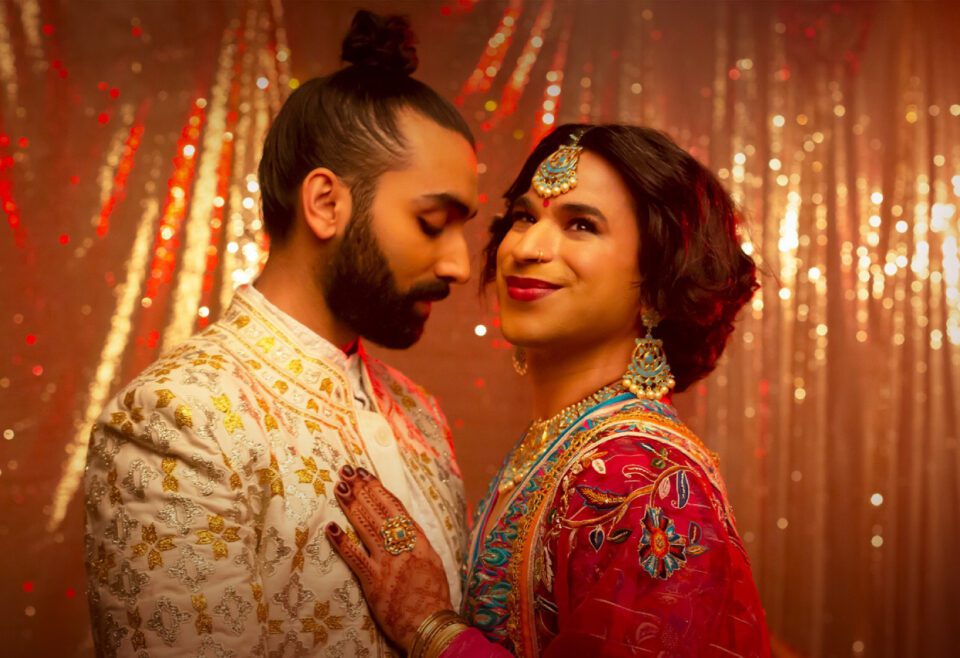
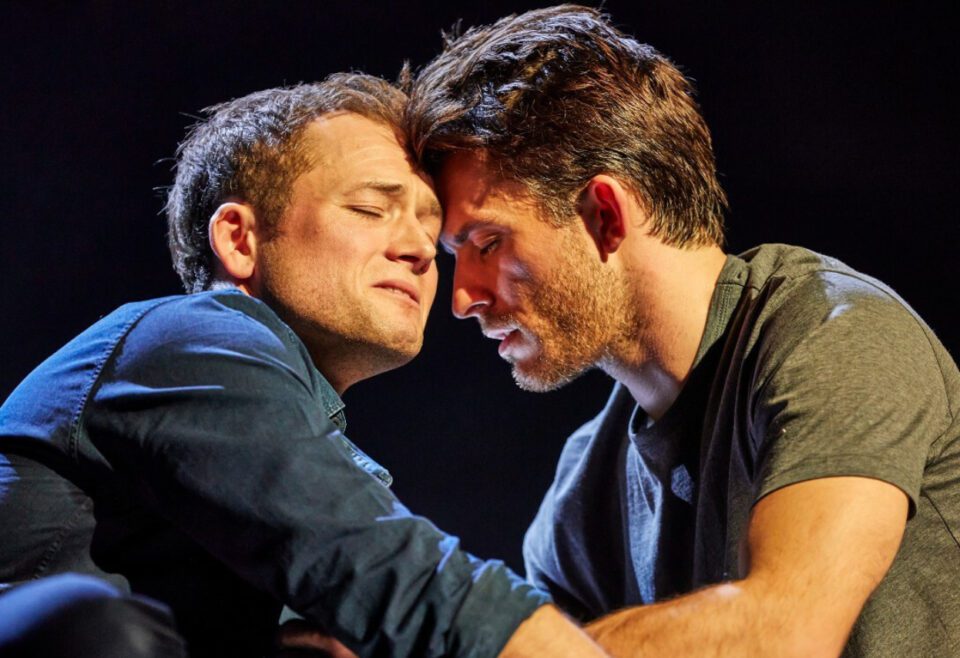
Elsewhere on the silver screen, if you’ve been anywhere near Billy Eichner’s Instagram you’ll have heard that LGBTQ+ films are hitting the big time. His enjoyable yet somewhat try-hard offering Bros was lambasted as last year’s LGBTQ+ film of the year. Despite it being the first LGBTQ+ romcom with a mostly LGBTQ+ cast to be given a wide release by a major studio, it failed to grasp the attention of all of the community. Hulu’s Fire Island hit the mark with many praising the clever writing and important spotlighting on race and romance within gay spaces. Starring Joel Kim Booster, Bowen Yang and Margaret Cho (to name a few) Fire Island stormed its way into our hearts as a queer Asian rom-com that delivered on its promise of being… well fiery. Inspired by Jane Austen’s Pride and Prejudice, the film highlights race, class and oppression within the LGBTQ+ community. Often a taboo in film and theatre, Booster, who wrote the film’s script, widens the conversation surrounding LGBTQ+ spaces and their whiteness.
In his cover Interview for GAY TIMES in 2022, Booster shared that he really wanted to “show people that there is joy in the experience of being gay” He said: “A big part of wanting to do this project was for me to say, ‘You will find your queer family, and through those people, you will have all of these wonderful experiences and create such an amazing tapestry of joy in your life.” A firm favourite amongst the community, Fire Island has cemented its way into the queer hall of fame by creating a film that isn’t trying to do everything all at once. It has a clear message, a clear voice and impeccable writing, allowing the story to unfold effortlessly.
Looking back to John Waters, the visionary talent had a clear tone of voice and specific (yet at times peculiar) message. It was unashamedly direct, daring to go to spaces that film hasn’t been before. Taking a risk, with it paying off dividends. Taking risks and striving for excellence is just what Shiva Raichandani did with Queer Parivaar, one of the best LGBTQ+ shorts of the decade. As director and star of Queer Parivaar, Raichandani is a monumental force of love and brilliance within the LGBTQ+ community. After crowd-funding the production and suffering delays due to the pandemic, Queer Parivaar’s strength is undefeatable. It follows the story of couple Madhav and Sufi on their wedding day and what happens when they are interrupted by a mystery guest – Madhav’s long lost grandmother.
Raichandani was able to source their production team via outreach and community connections, creating a queer South Asian community both in-front of and behind the screen. The South Asian musical acts as a shining example of how LGBTQ+ storytelling permits joy for all those involved. It’s a middle finger to those who believe we have ‘enough representation’, or who see queer tales as niche or unwanted. In a time in which Arts Council Funding has slashed production budgets across the country, leaving several venues across the UK with an 100% deduction in funding, Raichandani and their team birthed a film that stood on its own two feet in every sense of the word. The attention to detail and warmth Queer Parivaar exudes earned it Best British Short by the Iris Prize – a BAFTA qualifying festival for LGBTQ+ British Film, and a firm place on Channel 4’s streaming service All 4.
Looking ahead, there are a few things that are certain. The first being that ‘queer representation discourse’ will continue for years to come. With future seasons of Hearstopper to be released, as well as trans and queer characters appearing in shows like Doctor Who, people will always have something to say about LGBTQ+ characters making their way into prominence. Whether it be good or bad, from both inside and outside of the community, there will never be a show that everybody agrees on. The sooner we realise that that is OK, the better. Equally, I hope the future sees audiences realise that not everything is for everyone, and that doesn’t mean it’s exclusionary or elitist. The next being the stage reigning supreme. The risks and punches that theatre-makers take when putting their stories under the spotlight shows the grit and determination that they have to allow under-represented stories the space and time that they deserve. From clever casting to the queering of legendary spaces – such as Travis Alabanza’s new offering Sound Of The Underground at the Royal Court Theatre – theatre creates memories that are hard to beat.
The art of storytelling will continue to evolve, mature and react to the world around it. With an increase in digital spaces and the Metaverse, I’m sure storytelling will look vastly different in another 50 years. But, for now, let’s hope all the mediums that aim to share true, authentic stories listen and learn from each other so that they can create art that will be remembered forever.
